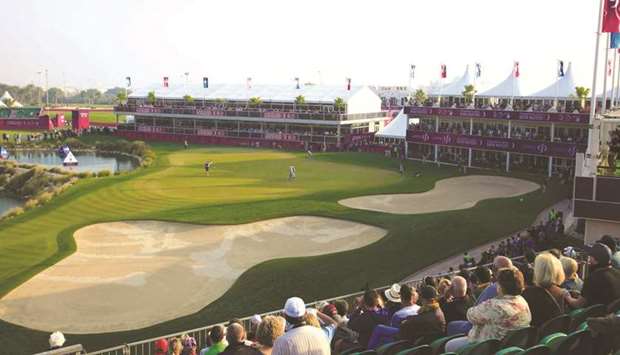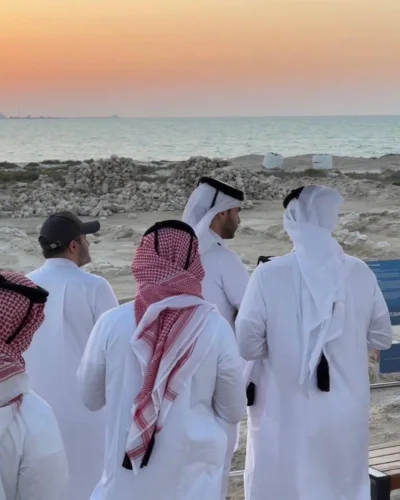Sports training sites are common around the world and establishing them in Qatar in aim to serve the 2022 FIFA World Cup national teams is an unprecedented sport boom and sustainable legacy that will benefit the emerging generations in all sectors.
Training Sites Project Manager at the Supreme Committee for Delivery & Legacy (SC) Engineer Ahmed al-Obaidly said establishing and developing new training sites in Qatar and preparing them three years before hosting the World Cup is a clear and strong proof of Qatar’s commitment to leave a true legacy for the region and the country, especially since the training sites have been used since December 2018 with the launch of Al Sailiya training site, that was completed in November of the same year.
Speaking to Qatar News Agency, al-Obaidly said building training sites, besides the main stadiums, is one of the FIFA requirements for any host country. He explained that it is part of the infrastructure required. However, in Qatar it will have two sections, the first is concerned with establishing new training sites and the second
with developing and processing existing facilities that meet the conditions, including those of the first and second tier clubs in Qatar, which will be allocated as training sites for some teams participating in the World Cup.
Obaidly said SC plans to build 30 training courts distributed across Al Sailiya, Qatar University, Doha Golf Club and Onaiza. Work has started at all locations since May 2017 and it is planned to conclude this month, when it will be ready to serve the Qatari community - individuals, companies and sports and non sports institutions who wish to use these facilities and hold sport activities in them, al-Obaidly said.
He said that training sites must meet certain requirements to offer an appropriate environment for the national teams participating in the World Cup. Each participating team will have its own site containing two training courts of natural grass used exclusively and privately once they arrive in Doha and until the end of its participation in the World Cup, he added.
Al-Obaidly said the Qatari government invested in building 30 training sites to directly serve sports in Qatar and the needs of all Qatari clubs in all its categories, especially as some clubs complain about the lack of stadiums that accommodate their teams. In addition, SC decided to use the stadiums of the first and second tier clubs as training sites for the participating national teams, with the aim of benefiting from the sports facilities available in Qatar and to ensure that the stadiums are not overflowing the tournament and local needs after it concludes, which is one aspect of the legacy that Qatar looks forward to achieving from hosting the World Cup.
Al-Obaidly said all the training sites will bring great legacy to the community as the Al Sailiya training site will be used for sports clubs in the country and the Qatar University courts will serve the students. In addition, Onaiza and Doha Golf Club locations will be used for national and international teams that hold training camps in Doha and for community services as there are many private academies that request courts to hold their activities. The Onaiza facility will also have a public park to serve the residents in the area, al-Obaidly said.
He explained the criteria for the locations chosen for the training sites were based on the service and legacy those locations will have for the community. In addition to choosing them to be close to the locations or hotels the national teams will be staying in during the tournament, SC plans involve preparing locations that do not require more than 20 minutes travel time from the teams’ accommodations. The criteria also include benefiting from these sites in the future to host clubs or teams training camps that are seeking isolation from the public areas for a quiet preparation period.
Al-Obaidly said the grass used is different than those in the stadiums, as in the training sites the grass seeds are planted manually, then certain chemicals are added to germinate the grass needed for courts, which takes a period of three to four months. This technique saves the time and effort it takes to move the grass from outside nurseries to the training site, which is also less expensive.
He said that the training sites should include at least two courts with natural and high quality grass, and a press centre for at least 100 people. It should also be equipped with rooms and stands that accommodate at least 500 people may be used by journalists or the masses, if allowed to attend part of the training. It also accommodates rooms for players and members of the technical staff and trainers.
Al-Obaidly said the main features that make the training sites in Qatar different from the rest of the world is that they effectively benefit from short distances in the country and that some training sites merge with complexes that include all the sports and service facilities needed by the teams participating in the tournament. In addition, SC co-operates with all State institutions, especially the football association, to make the most of these stadiums before and after the World Cup.
Al-Obaidly said that all projects have obstacles and challenges, which is what the training sites project faced at the beginning. However, all parties co-operated to overcome them and the project is progressing according to the schedules set by SC, which is evident in the completion of the Al Sailiya training site ahead of schedule in nearly eight months, and the rest of the sites will be completed on time.
Completing the training sites nearly three years before the 2022 World Cup in Qatar is a double-edged sword, as preparing these facilities so quickly is a positive thing, but it may be difficult for them to operate until the World Cup. However, al-Obaidly said SC has set up a department dedicated to the processing, operation and maintenance of the courts and facilities that will be equipped to serve the World Cup, which will ensure maintaining the quality and cleanliness of the training facilities until 2022.
Al-Obaidly added that the Al Sailiya training site was officially ready in November 2018 and was submitted by the main contractor. The department responsible for managing and operating the site is trying it before the World Cup, where the site hosted last December the training of the Palestinian and Kyrgyz national teams, part of their preparations for the Asian Cup which was held earlier this year and the Qatari national team won.
Al-Obaidly said the department received requests from the football association to host training for female national teams as they prepare for Asian Cup qualifiers. He added that the department is continuously working with the association to co-ordinate the events and training schedules to operate different training sites, in aim to use the grass and try it properly.
In addition to operating the site as a whole and to experience all of the services it provides in order to know how to improve and develop before the World Cup.
Al-Obaidly said the club facilities that will be used as training sites during the World Cup have not been officially decided yet, but a number of courts are being evaluated for their preparedness and meeting all the requirements needed to host participating national teams. He added that the inspection results revealed that many of the club courts meet the standard of the FIFA and some minor maintenance work will take place on these courts before the tournament kicks off to prepare it as options for SC to choose training sites from.
Al-Obaidly said the training sites that will be used by the national teams participating at the Qatar World Cup will meet the highest standards. He added that with preparing these sides, SC is meeting its obligations towards FIFA and provides the national teams training facilities they need to prepare for the tournament. He added that SC is also building a long-term legacy for sports in Qatar. After the World Cup, Qatari clubs, sports schools and football fans will continue to benefit from these high-quality venues.

A new training site to serve the 2022 FIFA World Cup national teams is coming up at Doha Golf Club.


